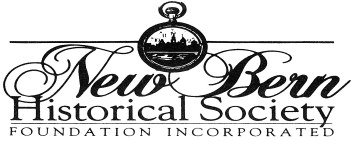
Maps (Return to Books or Currency)
Maps, Plans and Surveys in the Collection of Tryon Palace Historic Sites & Gardens
From the first sightings of land in the West Indies through the end of the eighteenth century, there was a constant demand for maps of the newfound lands on the western Atlantic. Until the early decades of the nineteenth century, most maps were the products of English and Continental (Dutch, German and French) cartographers and engravers, who often based their maps on explorer’s reports and mariner’s charts. Beyond their use for navigation, commerce and military affairs, maps had other functions. They recorded the progress of the European settlement of North America. They documented the borders between the colonies. And they provided a relatively inexpensive means of household decoration.
Newspaper advertisements for the colonial period indicate that maps were available in single sheets or bound in atlases or occasionally in magazines. Before the eighteenth century, private ownership of maps and charts implied a learned and accomplished status that was usually limited to men of wealth and power involved in trade, government or education. After 1700, there was greater economic diversity in map ownership. Maps can be found in the inventories and personal papers of colonial American mariners, millwrights, tradesmen, merchants, plantation owners, clergy, government officials, military officers and tradesmen.
The map collection at Tryon Palace Historic Sites & Gardens focuses on printed maps of the new world, with a special emphasis on maps depicting the Carolinas from the period of discovery to the Revolutionary War. This group includes examples of the work of some of the most important British and Continental cartographers and engravers of the seventeenth and eighteenth centuries. There are maps by William Janszoon Blaeu and Nicolas Sanson of Amsterdam, Jean Baptiste Homann of Nuremberg, and John Senex, Herman Moll, J. or T. Hinton, Thomas Jefferys, John Collet, Thomas Kitchin and Henry Mouzon of London. A second, smaller group of maps records changes in county boundaries in the State of North Carolina from the late eighteenth century to the Civil War. The collection also contains a number of eighteenth- and nineteenth-century surveys and topographical maps of New Bern and Craven County.
Catalog entries include both a short title reference and the full title including any dedication. Size is given in inches for paper, plate and image (measured from the outer edge of the neat line); measurements are always taken along the left edge and bottom of the print. Insets are treated in the same manner as the primary image. Significant features are noted in the description. Biographical information on the cartographer or engraver is included when possible.
Maps and Charts in the Digital Collection (Chronological Order):
| Maps of New Bern and Craven County | Maps of North Carolina |
| Maps of North America | Maps of the West Indies |
| Maps of Europe | Maps of Asia |
| Maps of the World | |
Book descriptions by Victor T. Jones, Jr. Currency and Map narratives written by Nancy Richards of Tryon Palace.
Last updated on June 9, 2015.



